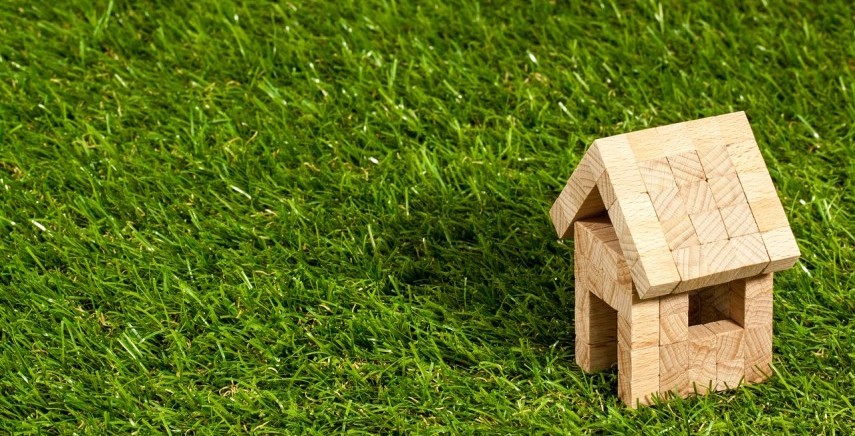A home loan is a loan obtained by a person from a bank or other financial organization at a specific interest rate in order to purchase a residential property. Equated Monthly Instalments (EMIs) are the only way to repay this debt to the bank. As contrast to home loans, the goal of choosing land purchase loans is to buy a parcel of land for the construction of a residential house or for investment. A House Loan is one of the most crucial things you should understand before making a purchase, regardless of whether you’re a novice or seasoned home buyer. While many individuals prefer to buy a house or apartment that has already been built, many others opt to acquire a residential piece of land, either as an investment or to build a house of their own design on it. At this point, you must choose between applying for a home loan and a plot loan. What distinguishes them and what are the advantages of each?
Features of a Home Loan
- You may obtain a mortgage to purchase real estate in any area of your choice.
- Loan terms may last for up to 30 years.
- You can get a tax deduction.
- You can obtain a home loan to purchase a condominium, bungalow, or row house from recognized builders depending on the lender.
- Additionally, you can obtain a loan to purchase real estate through government development agencies, cooperative housing societies, apartment owners’ groups, or privately built residences.
- If the husband and wife have independent sources of income and the loans are joint, each can claim an income tax deduction for the loan’s principle and interest individually.
- Depending on the lender, the loan-to-value (LTV) ratio might range up to 90% of the cost of the property.
Features of a Plot Loan
Before you apply for a plot loan, bear the following in mind:
- The land parcel needs to be situated inside the corporate or municipal boundaries.
- The loan cannot be used to purchase agricultural land.
- The land shouldn’t be situated near an industrial or a village area.
- The loan term may last up to 15 years.
- To acquire a plot through direct allocation or to buy a resale plot, you can obtain a plot loan depending on the lender.
- Tax deductions are only available for loans taken out to build the property on the plot and may only be claimed once construction is complete.
- Your loan-to-value (LTV) ratio will be up to 80%, which implies a loan for up to 70% of the cost of the property will be given to you.
Documentation Requirements for a Home Loan or a Land Purchase Loan
For Home Loan:
- Duly filled application for your Home Loan along with copies of your photographs.
- Bank statements of the past 6 months.
- Residence and identity proof.
- Fee cheque for processing.
- Most recent salary slip/ proof of business/ educational qualification certificates.
- Agriculturists who require a Home Loan need to submit some more documents as mentioned below:
- Title documents of agricultural land that prove landholding.
- Statements of the last 2 years of availed loans.
- Copies depicting cultivated crops on the land could be in the form of title documents.
For Land Purchase Loans:
- Signed and filled application form with photographs.
- Some identity proof- passport, PAN card, voter ID, etc.
- Some address proof- voter id, ration card, driving license, passport, etc.
- Educational qualification- most recent degree certificate.
- Housing documents- approved plans, title documents etc.
- Along with the documentation mentioned above, for an agriculture Land Purchase Loan, you also need to submit:
- Basic KYC (Know-Your-Customer) documents such as Aadhaar Card, PAN Card, and so on.
- Certificates that show your landholding.
Home Loan And Plot Loan Similarities
Application procedure since both loans are subject to a comparable due diligence procedure, the application procedure is also the same. Similar eligibility requirements, interest rates, and application procedures apply to both house loans and plot loans, however they may vary depending on the bank or NBFC you apply through. Whether you are applying for a house loan or a plot loan, your credit score is a critical factor in the process.
Whether you’re purchasing a ready-to-move-in residential unit or one that will be built later to meet your demands, knowing the functions and features of both a house loan and a plot loan may help you choose which one would be most suited to your needs.
Difference Between Home Loan and Plot Loan
| Loan type | Home Loan | Land Loan |
| Who is eligible | Resident Indians and NRIs | Only Resident Indians |
| Type of property | Residential | Residential |
| Purpose | Purchase of built up, under construction properties | Acquisition of land/plot |
| Location | Anywhere | Municipal or Corporation Area |
| Maximum Loan | 90% of the value of property | 75% of the value of the land |
| Foreclosure Charges | No foreclosure charges for floating rate Home Loan | 2%-5% of foreclosure charges applicable |
| Interest rate | Lowest among retail loans | 0.5% to 1% above home loan |
| Tenure | Up to 30 years | Up to 15 years |
| Tax benefit | On interest and principal repayment | No |

